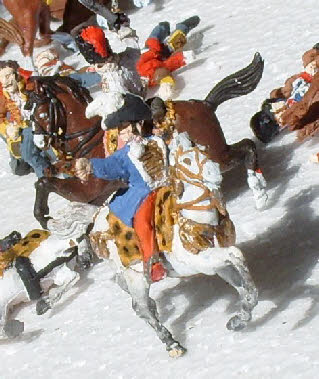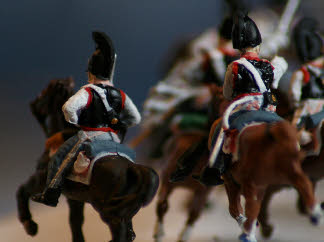
Modelling the Battle of Borodino 1812
Borodino1812.co.uk
September 2012 was the 200th anniversary of the epic Battle of Borodino. Immortalised in Tolstoy’s classic book ‘War & Peace’ and revered in Russia as the centrepiece of the war of 1812 against Napoleon’s Grande Armeé. It was one of the biggest clashes in military history involving over 200,000 troops.
Although technically Napoleon ‘won’ the battle since the Russians withdrew thus giving the battlefield to their enemies, by preserving the (albeit much reduced) army the Russians were able to defeat the Grande Armeé over the course of 1812. This was Napoleon’s first major military reversal from which he never fully recovered. Although he and his army showed examples of what had propelled them to seemingly continuous triumphs pre-1812, the ultimate consequence was his downfall in 1814 fighting Allied armies spearheaded by Russia. His brief reappearance in 1815 resulted in the final defeat at Waterloo. The link between Borodino and Waterloo is thus virtually direct, albeit inter spaced not only with many battles but also Russian Emperor Alexander 1’s triumphal visit to London in June 1814.
I built a diorama of the action to the south of the centre - the fleches: three 2 metre high earth emplacements open at the rear - and this was first displayed in London for the anniversary in September 2012. It was then displayed in Edinburgh until early November.
I have now embarked on a second Borodino diorama, smaller, but in the same format, though this is currently on hold whilst I progress two Waterloo dioramas.
This web site chronicles the 2012 diorama. A separate,
new site addresses the new models
http://www.borodino-to-waterloo.co.uk
Setting the scene
The battle and its historical context
The photo gallery
Here I show some of the model soldiers grouped by country.
Some are in the near finished format prior to their
incorporation into the final display -generally they are
lacking final metallic paint and addition of musket slings &
the like to finish them off. The final page shows examples
of figures being converted from basic versions.
The Model
Photographs of the finished model
Where did it all start?
I will explain briefly how I started on this odyssey
The Exhibition
And contacts etc

Very few of the models used are as they come out from the box; even they have had their ‘base’ removed and invariably a minor addition such as a water bottle. Generally the models have been subject to alteration by both knife and plasticine, the latter set hard by nail varnish (unwanted colours donated from my understanding wife and daughters). This page illustrates the process at one stage or another.
Photographs are sometimes larger than actual: models are on average 25mm tall



